This is a detailed guide on staining the canvas (or what is more formally known as underpainting). I remember when I first started using this technique. It had a profound effect on my work and my ability to judge colors.
I’ll cover:
- What it Means and Key Benefits
- Technique and Process
- What Color(s) to Use?
- Paint Wet on Wet or Wait for the Stained Surface to Dry?
- This Is an Optional Technique
- A Note on Other Mediums
- Want to Learn More?
- Thanks for Reading!


(I also published a video on this topic here.)
What it Means and Key Benefits
Staining the canvas refers to an initial wash or coat of paint on the canvas or whatever surface you’re painting on. Some other terms used to describe this process are underpainting, imprimatura, veneda, verdaccio, morellone, and grisaille. These terms all roughly describe the same process and vary only in nuance.
There are several key benefits of staining the canvas:
It kills the white surface, making it easier to judge your colors. Colors can appear darker than they are when compared to white. Staining the canvas gives you a more balanced playing field to paint on and makes it easier to judge how light, dark, rich, or dull your colors are. It’s the same reason why many artists, including myself, use a gray-toned palette for color mixing. Painting is hard enough, so you should look for small wins like this wherever possible.
It establishes a better foundation for the darks. It’s easier to hit those deep darks when painting on a darker surface. This is particularly important if you are using transparent paints in the darks, like alizarin crimson.
It builds momentum and warms up your hands. This is a simple but important benefit. The most challenging point in the painting process is the start. Staining the canvas gives you an opportunity to get things moving and to warm up your hands.
It’s efficient. If the stain plays into your overall color theme, you can leave parts exposed in the finished painting.
Technique and Process
To stain the surface, I typically use a large brush to apply thin washes of color. I use odorless solvent to thin the oil paint (if you use other mediums, use water to thin your paint). I then wipe down the surface with paper towel to remove any excess paint and smooth the surface. I might also use the paper towel to map out some of the light shapes.
You could also apply the paint directly from the tube to the surface and then wipe it around using a paper towel plus solvent.
What Color(s) to Use?
The color(s) you use to stain the canvas will depend on the purpose of the stain and its role in your painting. There are typically two options:
(1) You’re staining the canvas to create a more balanced surface to paint on and to help with your judgment of colors; or
(2) You’re staining the canvas as part of your overall color theme or strategy for the painting.
If staining the canvas to create a more balanced surface to paint on (1) then you should stick to some kind of earth color. Raw umber, burnt sienna, or yellow ochre are my default choices. The idea behind using these colors is that they are low in saturation (they won’t overpower your painting) and are relatively dark.
I typically avoid vivid colors like any of the cadmiums as they cause all kinds of problems with your color judgment. Though I have seen some artists make good use of vivid color for the stain. Dan Schultz comes to mind. He starts many of his landscapes by staining the surface with a deep and saturated red. See below a painting from his Instagram. The results are stunning, but I would avoid doing this if you are just starting out.
If staining the canvas as part of your overall color theme or strategy for the painting (2) then the colors you use should align with the rest of the painting. If painting a forest with luscious greens and yellows, you could stain the canvas with a rich blue (this would play well with the greens and yellows). If painting a dry landscape, you could stain the canvas with warm earth colors. This would give you the option of leaving parts of the stained canvas exposed in the finished painting, suggesting rocks, soil, twigs, dried leaves, etc. If painting a stormy, overcast seascape, perhaps a stain of purple or blue would work well. If painting a fiery sunset, you could set the stage with deep reds and purples, as I did with my painting below.


I have also seen artists use complementary colors as the stain. For example, if the main color in your painting is green, they would use a dull or faded red for the stain. This can have a striking effect if you pull it off. Again, I would avoid doing this unless you are more advanced.
Paint Wet on Wet or Wait for the Stained Surface to Dry?
I typically wait for the stained surface to dry before I proceed with the rest of the painting. This ensures no unwanted color mixing. But there are times when I jump straight into it and work wet on wet. I do this when the color of the stain plays into the overall color theme and the colors mixing on the surface may produce favorable results.
My painting below is a good example, Brisbane City, Mist. I started by staining the surface with rich blue and green. I then proceeded to work wet on wet, painting the light grass area. The wet surface meant my bright green and yellow strokes mixed with the blue paint. This would usually be a problem, but here it created interesting color mixtures that play well in the overall theme (there’s a natural synergy between yellow, blue, and green). The wet surface also made it easier to create soft edges between light and shadow. The more I blended my strokes into the wet surface, the softer the edge. This is particularly evident in the second image with the sky.



This Is an Optional Technique
Staining the canvas is just one of many tools at your disposal. It’s not something you must do for every painting, but it’s ok if you do.
As I gained experience, I have found staining the canvas to be less necessary. My ability to accurately observe color has improved to the point that I have no issues with painting directly onto the white surface. When I do stain the canvas, I do so more because it aligns with my overall strategy for that painting or because I’m not sure how to start and want to build momentum.
We also should not ignore the benefits of painting directly onto the white surface. These are:
- There’s nothing like the feel of making those first strokes onto a fresh white canvas. My strokes don’t feel as crisp when painting onto a stained surface.
- You might want to utilize the white surface in the finished artwork. For example, you could leave parts of the white surface exposed as highlights (as you do in watercolor painting). Or you use exposed parts of the white surface to create a rustic, painterly finish. I did this in my painting Minnippi, Green, Contrast. See the painting below plus a closeup. Notice tiny gaps in the paint exposing the white canvas.
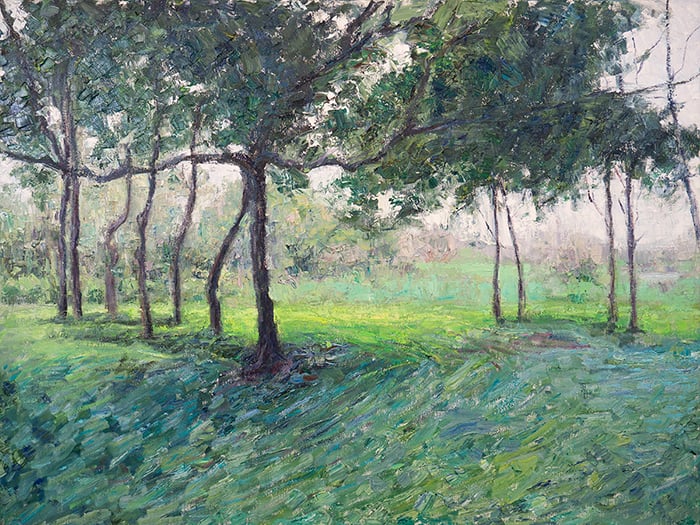

- There’s simplicity in working straight onto the white surface.
- The white surface might play well into your overall strategy and theme for the painting. For example, if you’re panting in a high key (light colors), painting directly on the white surface means you don’t need to work against the darker, stained surface.
A Note on Other Mediums
Staining the canvas is typically an oil painting technique, but you could use it with most other wet mediums. In the video below, James Gurney stains the canvas with yellow casein and paints over with gouache.
The main consideration is for watercolor painters. You typically need to preserve the white of the surface for your highlights, so staining should be used more sparingly. You also only have so much room to work with before your paper becomes unresponsive.
Want to Learn More?
You might be interested in my Painting Academy course. I’ll walk you through the time-tested fundamentals of painting. It’s perfect for absolute beginner to intermediate painters.
Thanks for Reading!
I appreciate you taking the time to read this post and I hope you found it helpful. Feel free to share it with friends.
Happy painting!
Dan Scott

Draw Paint Academy


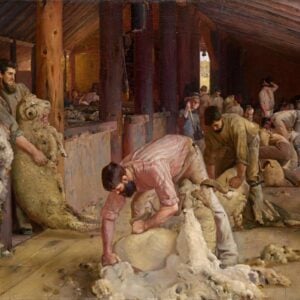
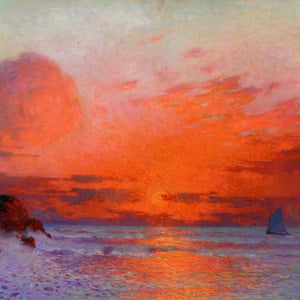
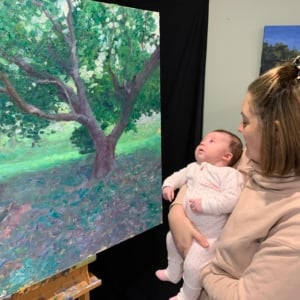
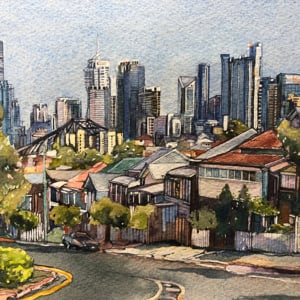
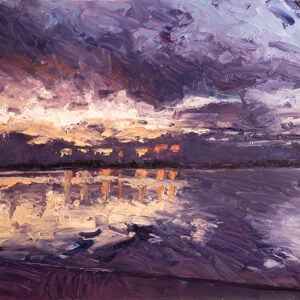

Hi. Thanks. Wish you would allude your tips for acrylic painters as so many are relevant.
Many thanks
M
M
I work within the acrylic realm also. A tip I received, is to explore and use acrylic mediums. There are some that keep acrylic paint ‘open’, therefore extend drying times. This can give a wet on wet feel, like oils, and can increase colour mixing opportunities by the kzillion.
I have taken almost everything Dan has written and applied to acrylics. Some things work and sometimes I need to do a redo! Thanks to Dan, and his courses, esp anything colour theory stuff, my canvas size became bigger and I found my expression is texture.
Hope this helps you.
T
Great comments. I have been painting a long time though and cannot find any acrylic mediums I like to keep them open. They increase drying time rather than extend it.
Hi Mary. I had the same problem which acrylic dry so quickly. I partly solved to some extent not as musch as would have liked to but it helped. Try google: extending the drying time of acrylics. There some DIY’s you can try.
Hope this helps.
God bless
Joe
Thank you for being so generous with your time. I really appreciate the intelligent information you share. I’ve wanted to paint since I was a child, but where I used to live there was no products available to purchase. Now that I live where I have access to supplies, and I’m retired, I have the time and can purchase products to paint. I find that using your information my painting as improved exponentially. Thank you again, you’re helping a lot of us amateurs enjoy and keep painting.
Well said Emma and I totally agree. I’m not one for classes or even books as I much prefer bumbling my way along and enjoying the adventure on the way. But yes, Dan’s notes are perfect for me as he reiterates what I find out on my own. Thanks Dan!!! 🙂
Hello Dan Scott,
Been quietly reading what fine things you have to say…
This under painting is particularly helpful.
Thank you for your trouble and time and VISUALS!!
So cool!
Warm regards,
Nancy Anderson
Waunakee, Wisconsin
Dan, you are such an inspiration and provide excellent advice and instruction. We know it takes alot of time to research and add such stunning examples to your instruction. Thank you for sharing freely your giftedness and yourself. I love reading and saving your emails. I want to paint more, using acrylics for all my projects and your tips are so helpful.
Thanks Dan,
Happy to read your article! I have used underpainting since I started painting 8 years ago. Transparent red oxide is my go to color for my landscapes. I usually wipe with a cloth to form my basic shapes. So I’m happy to see your brush stroke affects in your underpainting and will apply this if I can. I have started using more complimentary colors…orange under my blue sky, purples under yellow flowers etc and it is a great affect. I struggle with deciding on an underpainting color…your article helped. Thank you.
Rose
Abingdon, Virginia
Thank you very much, it has been most informative, I will certainly try the staining method as I always seem to have white canvas peeping through where it shouldn’t.
Thanks, Dan! I AWAYS stain my canvas before beginning any painting, indoors or Plein Aire. So glad you agree about the grey tone palette, too. Keep sending us tips!! You are most encouraging to all levels of artists!
Sandy
Schaumburg, Illinois
thank you for your wonderful blog and all your tips. I especially appreciate that you explain so clearly with examples. As a comment, in watermedia, one of my teachers would underpaint in a transparent yellow or gold but leave the whites unpainted. It served to unify your color scheme and reminded you to save the whites. Since most of the watermedia grounds are a warm white, the scheme worked.
Invaluable advice. Always appreciated, Thanks Dan
As a beginner and a ‘tentative’ painter, this technique will be very helpful. I’m trying to set aside more time to paint and your advice is sure to help me improve more quickly than I could on my own.
Thank you Dan. I started painting about 4 years ago and I have been using your tips from the very beginning. I appreciate the information I’ve learned so much. In March I was able to show my art in a local art gallery for the first time.
Thank you so much Dan, a very helpful suggestion that I will begin using!
Thank you! for that lesson on Underpainting. I’ve been wondering about that and why one wouldn’t stain different parts of the canvas different colors. I can see now that that could work depending on the outcome desired. Thanks again Dan. Gay
I’m a grandma Moses newbie. After retiring at 82 in 2021 I realized how easily I get bored, and that writing wasn’t enough to fill my days. Winters in the High Desert of California are brutal and I’m a tropical plant, so gardening was out of the question. I found some cheap acrylics stored in my tool shed that I had bought 8 years ago when moving here and had used them to paint the wooden masks I’ve collected for years. So over my daughter’s objections I started with those. Eventually I bought good quality acrylics although not the most expensive, and noticed the huge difference a good quality paint makes. So here I am, a year and a few months still learning as much as I can. Practice makes perfect but if I can’t learn the techniques, it’s useless. Color mixing for me is very difficult so any lesson that teaches me how to achieve better layering, build a painting with depth and mix colors is welcomed. Thank you.
Thanks for your very helpful articles. I use to paint as a commercial artist about 45 years ago. Had to stop when I got married. Now at age 69, I decided to started painting for fun, for myself. Finding your suggestions and examples very helpful. Thanks.
Hello Dan, So far, I’m not much more than an armchair painter; a dabbler. I appreciate your information and your style. You provide links for more in-depth information, but you leave the highbrow out of it. Thank you also for the introduction to a couple of unfamiliar artists in “12 Famous Night Paintings and Why They Work.” I love night paintings, especially the very moody ones, though I love Van Gogh’s brilliance – artistic, emotional and color choice. Finally, I also want to thank you because today is the anniversary of a very sad event in my life, and your article was a timely distraction, not to mention the beauty your site shares!
Thank for your lessons.
The results are beutiful!
.
Thank you so much for teching me so well for free! Every mail from you make me so happy and better artist.thank you a lot!
Thank you so much Dan! I find all of your articles and thoughts extremely helpful! I really look forward to what’s coming up next:) I also appreciate the details of your process and insights which are so useful for those of us who are learning! Many thanks!
I Always enjoy reading your articles & this one w the sliding window (showing your before and after) was spot on. I normally underpaint in earth tones & try to block out the big forms. Experimenting, I tried red under a beach scene. My magenta really threw me for a loop! Now I know why. You help more than you know. I want you to know how much I appreciate you sharing all your knowledge with us!
Hi Dan,
I have for many years used a tinted gesso coat usually light yellow ochre on my canvas. That removes the glaring white surface. Then I do the sketch of my composition and follow with blocking in large areas with a medium value underpainting. What are your comments on working this way? Thanks,
Liz from Blue Hawaii
Hello Dan,
Your advice on under painting a canvas was so helpful. You made so many excellent suggestions. One thing I would like to add. Oil paint does take a while to dry . So if you are intending to do an oil painting its useful to do the under painting in acrylic This works just as well as an under painting in oil and is dry in an hour or so. We all know you can’t paint acrylic over oil but you can paint oil over acrylic. I find this a practical and easier way to go with my under painting . Also I like the way that the colour in the under painting can be retained as specks showing through in the whole work – so I would say “don’t cover all your under painting up with the next application of paint” and the subtle “showing through” of the under paint can unify the whole colour scheme . I picked this up from watercolour techniques where they call this ‘painting short’ .
Marlene Griffin
I generally use acrylic under paintings too, Marlene, and can often wipe it to show lines for the painting to come. Thanks to Dan for sharing his years of knowledge!!
If using acrylic it’s better to add the ranges recommended colourless extender because it has been discovered that adding too much water strips away the bonding agent and reduces the pigment to power when it’s dry, hence it’s adhesion properties are gone; this won’t be a stable surface to paint on. Of course in the short term it should be fine however conservators warm against using only water.
A useful tip although I’m sure I read somewhere that (using acrylics as a medium) this happens when you add more than about 30% water to acrylic paint as the water molecules can create gaps too large for the acrylic medium to bond reliably to itself and/or the substrate. Be interesting to know if this is different when a dried acrylic has an oil medium “on top.”
I’m moving from acrylic to oil at present so have a range of different acrylic colours and brands I’m experimenting with for underpainting oil. Hoping my paint doesn’t fall off in a couple of years 🙂
Brilliant and informative article. Thanks so much Dan!!!
Brilliant and informative. I always learn something each time I read your articles. Thanks so much, Dan!!!
Hi Dan: Your creative information and canvas knowhow has been a true inspiration to me. While I remain a beginner, this new hobby has become a daily passion….. because of your proven methods and skills. Thanks so much for helping meet set higher standards! I’m getting much better every month. Ontario, Canada.
Dan,
Thank you for these notes and advice, as a newbie it adds confidence.I so enjoy learning this complicated and satisfying skill.
Dallas , Texas
Hi Dan For your blue layer are you using oil, if so, which solvent combo do you prefer. It’s exactly what I’ve been looking for.
Hi Mary! Yes oils. I use odorless solvent by either Art Spectrum or Gamblin. Cheers!
Lindsay Weirich (thefrugalcrafter on YouTube) had a wonderful recording of the grisaille method for watercolour painters. I used diluted Carbon Platinum waterproof ink for the underpainting so it wouldn’t lift when adding the colours on top.